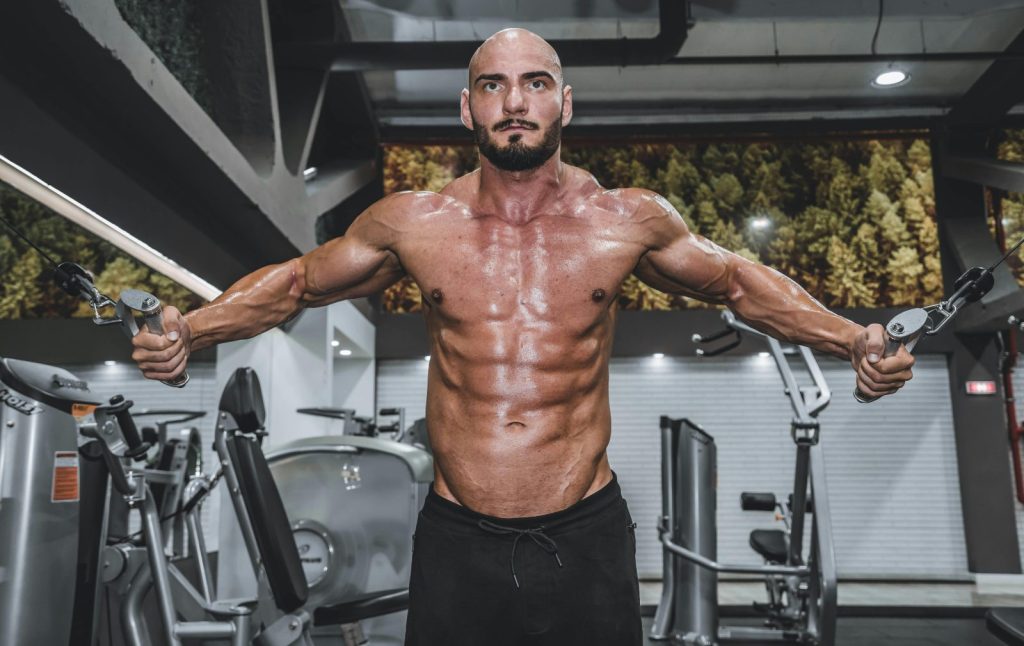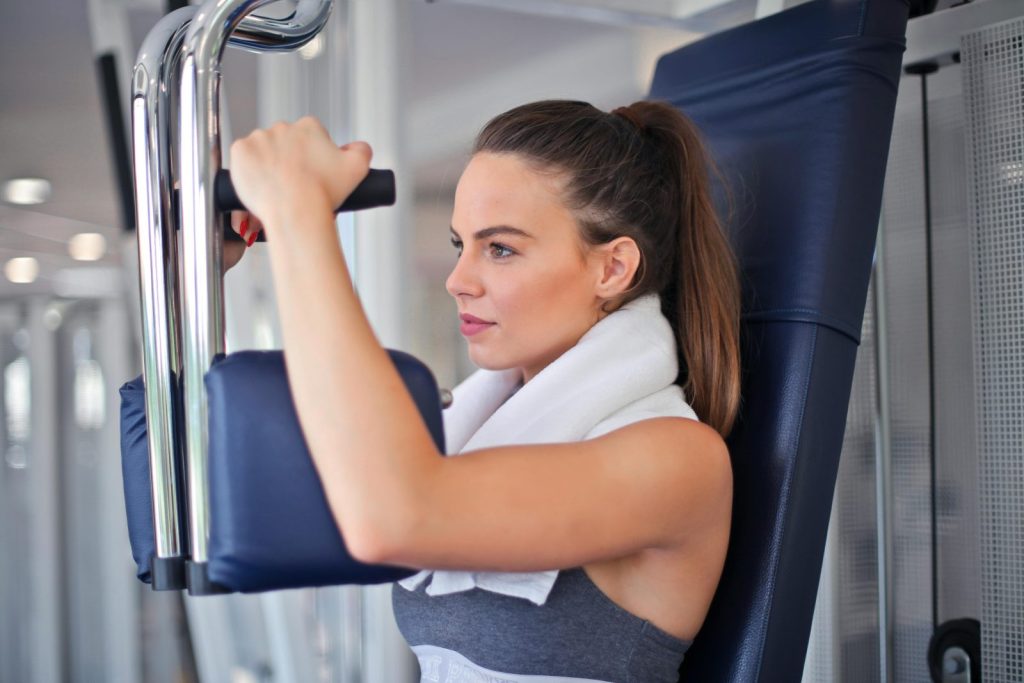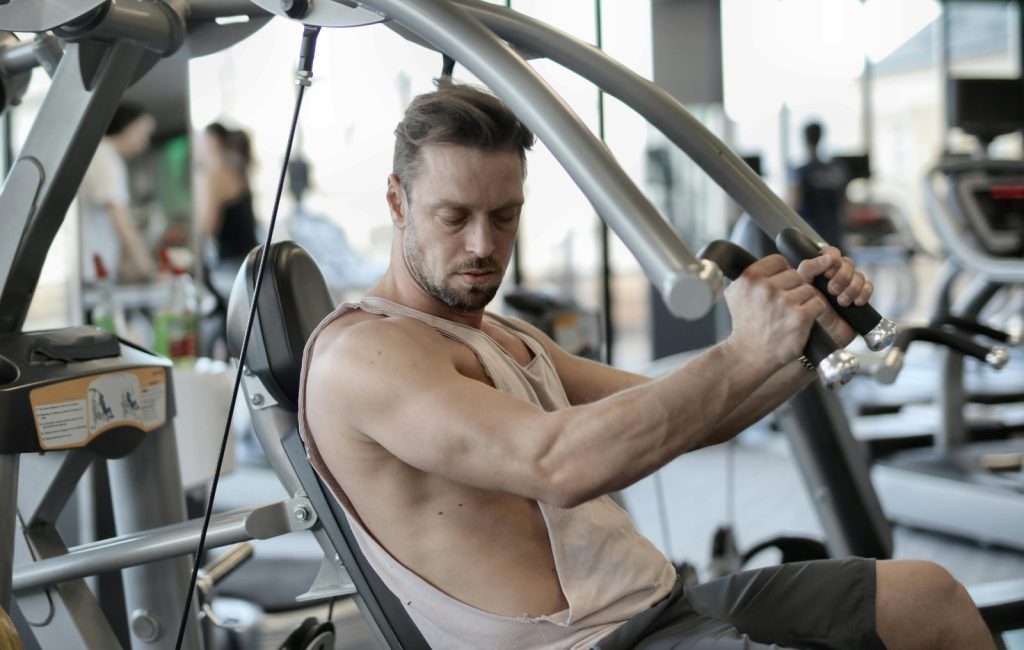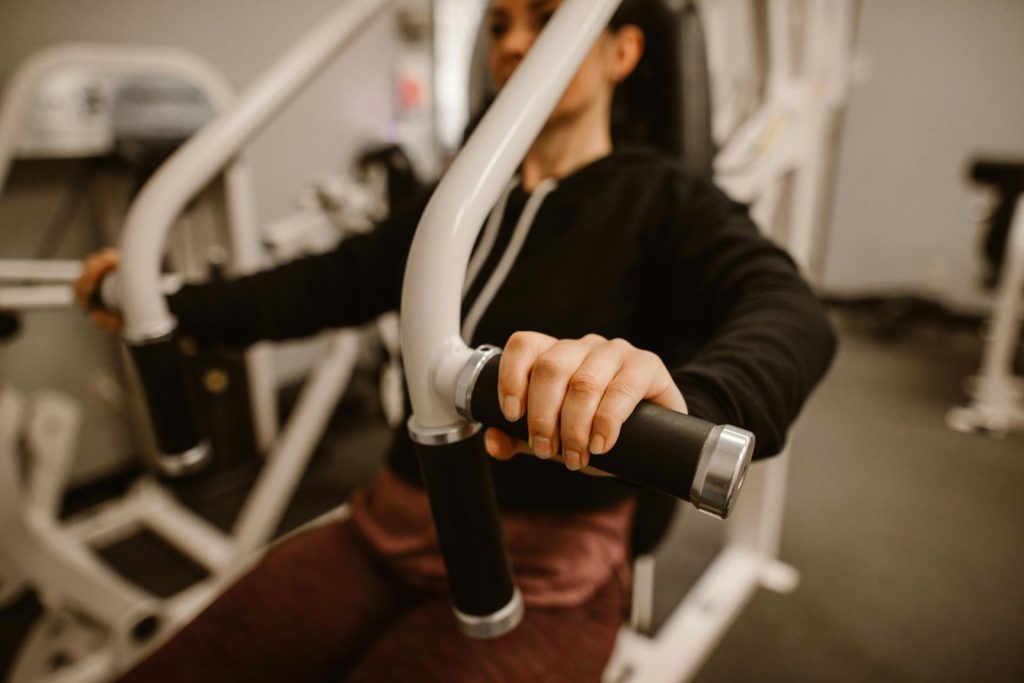chest workout with machine: Powerful, Pain‑Free Gains with the 9 Best Exercises (Real Form Cues)

chest workout with machine: Powerful, Pain‑Free Gains with the 9 Best Exercises (Real Form Cues)
If your chest day keeps stalling or your shoulders take over every press, a targeted chest workout with machine can unlock faster growth while keeping your joints safe. This guide gives you the 9 best machine chest exercises with real, science-backed form cues so you feel your chest, not your shoulders, every rep.

The problem most lifters face
Many lifters never truly feel their pecs work. Instead, they feel front delts and triceps, grind through joint discomfort, and plateau. A well-designed chest workout with machine solves this by stabilizing the path of motion, letting you focus on tension, range, and technique. You will learn how to use consistent resistance profiles, align joints for shoulder health, and apply simple cues that create instant mind–muscle connection for bigger, stronger pecs.
What you’ll get in this guide
- The 9 best exercises to structure your chest workout with machine for upper, mid, and inner chest.
- Real form cues to prevent shoulder pain and force production leaks.
- A complete chest workout with machine blueprint for beginners, intermediates, and advanced lifters.
- Evidence-informed programming, progressions, and intensity techniques.
- An Amazon-ready piece of equipment to run a chest workout with machine at home.
High-intent phrases included
Expect to see terms people actually search for woven naturally here: machine chest press, incline chest press machine, pec deck fly, cable crossover, Smith machine bench press, seated chest press, plate-loaded chest press, converging chest press, upper chest workout, bench press alternative, progressive overload, hypertrophy, and mind–muscle connection.
Why a chest workout with machine builds more muscle and protects your joints
Machines constrain path and stabilize the load, so your nervous system can drive your pecs instead of burning bandwidth on balance. For a chest workout with machine, the fixed arc allows better scapular positioning, consistent elbows-in angles, and more precise alignment of wrist–elbow–shoulder. This improves tension on the pecs and reduces anterior shoulder stress.
- Machines make progressive overload simpler and safer, especially near failure.
- You can bias fibers (upper vs mid) by adjusting the bench angle or handle height.
- A chest workout with machine supports slower eccentrics and longer end-range pauses for hypertrophy without the bar path drifting toward shoulders.
- For lifters with cranky shoulders, a chest workout with machine lets you train hard while keeping scapular retraction/depression consistent.
The 9 best exercises for faster chest growth
1) Seated Machine Chest Press (Converging Arms)
This is the cornerstone of any chest workout with machine. The converging motion mimics dumbbells while adding stability, producing a strong stretch and peak squeeze.
- Setup: Seat so handles line up mid-chest. Retract and gently depress scapulae. Feet planted.
- Execution: Press with elbows 30–45° from torso. Think “drive biceps inward” as hands converge. Control the eccentric for 2–3 seconds.
- Cues: “Crack the walnut between shoulder blades,” “push your sternum up,” “squeeze your pecs, not your hands.”
- Common mistakes: Flaring elbows to 90°, losing scapular set, bouncing off the bottom.
- Sets/Reps: 3–4 sets of 6–10 reps.
- Why it works: High stability means you can approach failure safely and keep tension in pec major.
2) Incline Chest Press Machine (Upper Chest Bias)
Prioritize this in your chest workout with machine if you need more upper chest thickness.
- Setup: 20–30° incline is enough; too steep shifts load to delts. Handles should align with upper chest.
- Execution: Keep elbows at ~45°. Think “up and in” as you press to shorten clavicular fibers.
- Cues: “Chest tall,” “wrap your elbows in,” “meet the handles with your chest.”
- Common mistakes: Over-inclining bench, shrugging shoulders, losing ribcage position.
- Sets/Reps: 3–4 sets of 8–12 reps with a 2-second eccentric.
3) Pec Deck (Machine Fly)
A machine fly done right is a top isolation move in a chest workout with machine, delivering a huge stretch and contraction without elbow loading.
- Setup: Seat height so forearms align with pads at mid-chest. Slight bend at elbow stays fixed.
- Execution: Hug the midline while keeping shoulders down. Pause for 1–2 seconds in the contracted position.
- Cues: “Lead with the inside of your biceps,” “slide shoulder blades into back pockets,” “touch elbows, not hands.”
- Common mistakes: Excessive elbow bending mid-rep, shrugging, bouncing the stretch.
- Sets/Reps: 3–4 sets of 10–15 reps, slow stretch.

4) Cable Crossover (High-to-Low or Midline)
Cables aren’t a fixed machine, but they offer machine-like tension and precise lines of pull, making them essential to any chest workout with machine.
- Setup: Pulleys slightly above shoulder level (for midline). Stagger stance, ribs set.
- Execution: Sweep hands in an arc toward the sternum. Maintain scapular depression as you cross.
- Cues: “Draw a big circle,” “keep pinkies slightly leading,” “exhale into the squeeze.”
- Common mistakes: Turning it into a press, losing elbow angle, leaning too far forward.
- Sets/Reps: 3 sets of 12–15 reps with a 1–2 second peak squeeze.
5) Smith Machine Bench Press (Flat)
A stable bench press alternative for a chest workout with machine when you need load and repeatability.
- Setup: Bar path should line up with the lower chest. Retract and depress scapulae; slight arch.
- Execution: Lower to just below nipple line with forearms vertical. Drive up without elbows flaring.
- Cues: “Bend the bar,” “press from the chest, not the shoulders,” “heels through the floor.”
- Common mistakes: Bar path too high, wrists bent back, bouncing on chest.
- Sets/Reps: 3–5 sets of 5–8 reps.
6) Plate-Loaded Decline Chest Press
This variation gives a strong lower-pec bias and is a smart inclusion in a chest workout with machine for full pec development.
- Setup: Set the seat to align handles with lower chest. Keep ribs stacked and shoulders down.
- Execution: Press down-and-out, control the eccentric to avoid shoulder roll.
- Cues: “Zip your ribs,” “drive elbows on a slight downward path,” “pause just off lockout.”
- Common mistakes: Overarching lumbar, elbow flare, bouncing plates.
- Sets/Reps: 3 sets of 8–12 reps.
7) Single-Arm Machine Chest Press
Unilateral pressing fixes asymmetries and deepens mind–muscle connection within your chest workout with machine.
- Setup: Same as bilateral, but grip the seat with the non-working hand to brace.
- Execution: Pause at the bottom stretch; press up and across the body.
- Cues: “Reach with your pec,” “keep the opposite shoulder pinned,” “draw the elbow to the hip.”
- Common mistakes: Torso twisting, losing scapular position, rushing tempo.
- Sets/Reps: 3 sets of 8–12 reps per side.
8) Machine Dip (Chest Angle)
Leaning forward with flared—but controlled—elbows biases the chest. It complements a chest workout with machine when available.
- Setup: Handles wide enough for chest. Lean forward 10–20°, tuck chin slightly.
- Execution: Descend until you feel a deep chest stretch, then drive up without locking out triceps hard.
- Cues: “Elbows out and slightly forward,” “chest to hands,” “press through the heel of the palm.”
- Common mistakes: Going too upright (triceps dominant), shrugging, extreme elbow flare.
- Sets/Reps: 3 sets of 8–12 reps.
9) Seated Cable Press (Dual Handles on Functional Trainer)
With fixed bench and equalized cables, this behaves like a machine press and rounds out a chest workout with machine when you want a new stimulus.
- Setup: Bench at slight incline, cables set just below shoulder height.
- Execution: Press up-and-in with a slow eccentric; keep wrists stacked.
- Cues: “Squeeze the handles toward each other,” “ribs down, chest up,” “pretend to bend the handles.”
- Common mistakes: Handles too low or high, losing midline tension, rushing the negative.
- Sets/Reps: 3 sets of 8–12 reps.

Complete chest workout with machine blueprint
Use these plug-and-play templates to personalize your chest workout with machine while protecting your shoulders and elbows.
Beginner (2 days/week, 9–12 total sets)
- Seated Machine Chest Press: 3 x 8–12
- Pec Deck: 3 x 12–15
- Cable Crossover: 3 x 12–15
Focus on feeling the pecs shorten and lengthen. For a foundational chest workout with machine, keep 1–2 reps in reserve and add small weight jumps weekly.
Intermediate (1–2 chest days, 12–16 sets)
- Incline Chest Press Machine: 4 x 8–12
- Machine Chest Press (Converging): 3 x 6–10
- Pec Deck: 3 x 10–15
- Cable Crossover (High-to-Low): 2 x 12–15
Rotate the first movement weekly between incline and flat to keep your chest workout with machine fresh while controlling joint stress.
Advanced (specialization phase, 14–20 sets)
- Smith Machine Bench Press: 4 x 5–8
- Incline Chest Press Machine: 3 x 8–10
- Single-Arm Machine Chest Press: 3 x 8–12 per side
- Pec Deck with 2-sec stretch: 3 x 10–15
- Cable Crossover with 2-sec squeeze: 2 x 12–15
In an advanced chest workout with machine, consider one intensity technique per workout, such as rest–pause on the final set of the first movement.
Real form cues that transform your chest workout
Great cues make every chest workout with machine safer and more effective. Use the ones that instantly shift tension to your pecs.
- Scapula: “Back and down.” Keep a gentle retraction and depression to open the chest and protect the shoulder.
- Elbow path: “45° from the torso.” This angle maximizes pec torque while reducing anterior shoulder strain.
- Wrist stack: “Knuckles to ceiling.” Straight wrists keep force stacked through the forearm into the handle.
- Ribcage: “Chest up, ribs anchored.” Slight thoracic extension without flaring lower ribs keeps you stable.
- Range: “Earn the bottom.” Only descend to a strong chest stretch without shoulder glide forward.
- Tempo: “Slow down.” Use 2–3 seconds on the way down and pause briefly near end ranges.
- Intent: “Drive in and across.” Think elbows traveling toward the midline to fully shorten pecs.
Apply these on your next chest workout with machine and you’ll feel more chest and less shoulder instantly.
Programming for growth without joint drama
To build your chest with minimum wear and tear, program your chest workout with machine like a pro.
- Weekly volume: 10–20 high-quality sets per week for the chest, adjusted to recovery.
- Rep ranges: Use 5–8 for Smith presses, 8–12 for machine presses, 10–15 for flies and crossovers.
- Progression: Add the smallest load that keeps reps in the target range. If form slips, repeat the load.
- Proximity to failure: Stop 1–2 reps short of form breakdown on most sets; push closer on the last isolation set.
- Intensity techniques: Rest–pause, drop sets, and lengthened-partial finishers can spice up a chest workout with machine without compromising control.
- Deloads: Every 4–8 weeks, reduce sets or load to keep joints fresh.
With smart progression, your chest workout with machine becomes a reliable engine for hypertrophy.
Common mistakes that stall progress
These errors quietly sabotage your chest workout with machine. Fix them and watch your pecs respond.
- Shrugging the shoulders during presses and flies.
- Elbows flaring to 90°, overloading the anterior capsule.
- Bouncing from the bottom instead of controlling the eccentric.
- Chasing load at the expense of range, alignment, and tempo.
- Neglecting upper chest with zero incline work in your chest workout with machine.
- Ignoring unilateral work that fixes asymmetries and improves neural drive.
Shoulder health and long-term gains
If you’ve had shoulder aches, a chest workout with machine is often the fastest way back to productive training. Keep these in play:
- Warm up with light cable flys focusing on scapular depression and gentle pec activation.
- Use a neutral or semi-pronated grip when available; it’s friendlier on wrists and shoulders.
- Keep a slight arch, but avoid rib flare that shifts tension away from pecs.
- If any motion pinches, reduce range slightly and slow the eccentric. Pain-free reps are non-negotiable in a chest workout with machine.
- Consult a professional for persistent pain; rotator cuff and labrum issues need attention, not bravado.
Evidence-informed technique insights
Pec major produces horizontal adduction and internal rotation. In a chest workout with machine, we bias these by converging arm paths and keeping elbows 30–45° from the torso. The clavicular head prefers a slightly upward and inward line—hence the power of an incline chest press machine for upper chest. Tension is greatest when you control the eccentric, reach a meaningful stretch, then intentionally squeeze to the midline. This is why a machine chest press and pec deck duo is a time-tested pairing in any chest workout with machine.
Intensity techniques that still protect joints
Add one technique at a time to your chest workout with machine:
- Rest–pause: Hit 8–10 reps, rest 20 seconds, then 2–4 more reps.
- Drop set: Reduce the stack 20–30% and continue for 5–8 reps after near-failure.
- Lengthened partials: After full reps, add 3–5 small reps in the bottom third on flies.
- Tempo sets: 3–4 second eccentrics for 6–10 reps on a machine press.
Done sparingly, these boost stimulus without wrecking recovery in a chest workout with machine.
Nutrition and recovery to match your training
Even the best chest workout with machine needs support:
- Protein: Aim for roughly 1.6–2.2 g/kg/day, split across 3–5 meals.
- Carbs around training: Fuel your chest workout with machine with a pre-lift snack for better pumps and performance.
- Sleep: 7–9 hours to consolidate motor learning and muscle growth.
- Creatine monohydrate: 3–5 g daily complements progressive overload.
Amazon equipment spotlight: Marcy Smith Cage Workout Machine
If you want a versatile home setup to run your chest workout with machine, consider the Marcy Smith Cage Workout Machine with bench and pulley system, available on Amazon. It combines a Smith press, cable cross, and adjustable bench, giving you the core tools for presses, crossovers, and flies in one footprint.
- Why it fits: You can perform Smith machine bench press, incline Smith press, cable crossovers, and pec-focused movements safely—everything you need for a chest workout with machine that scales from beginner to advanced.
- Key features: Smooth Smith guides for stable pressing, dual adjustable pulleys for crossovers, adjustable bench for incline/flat/decline, and multiple attachments for full-body training.
- Who it’s for: Lifters who want the consistency and joint-friendly stability of a chest workout with machine at home without piecing together multiple stations.
- Pro tip: Use the adjustable pulley height to create perfect high-to-low or low-to-high arcs so your chest workout with machine always matches your target fiber bias.
With this single station, your chest workout with machine becomes easy to program, safe to progress, and satisfying to perform.
Sample 8-week chest workout with machine progression
- Weeks 1–2: Learn positions. 2–3 seconds eccentric on all presses; 1-second squeezes on flys.
- Weeks 3–4: Add 2.5–5 lb per side to machine presses if all reps met. Keep 1–2 reps in reserve.
- Weeks 5–6: Introduce one technique (rest–pause) on the final set of your main press in your chest workout with machine.
- Weeks 7–8: Keep load steady, push one isolation set to near failure with a drop set, then deload volume by 30% for 1 week.
This simple plan grows strength and muscle without beating up your joints, proving the power of a disciplined chest workout with machine.
FAQs about machine-based chest training
- How often should I run a chest workout with machine?
Most lifters grow best with 1–2 dedicated sessions per week totaling 10–20 sets. - Can I build a big chest using only a chest workout with machine?
Yes. With progressive overload, appropriate volume, and full ranges, machines can fully develop your pecs. - What’s the best exercise to start a chest workout with machine?
A converging seated machine chest press or Smith machine bench press, depending on shoulder comfort. - How do I avoid shoulder pain during a chest workout with machine?
Maintain scapular set, keep elbows 30–45° from the torso, and lower to a stretch you can control without shoulder glide. - Is cable crossover essential in a chest workout with machine?
It is highly valuable because it provides consistent tension and customizable lines of pull for upper, mid, and lower chest. - What tempo is best for a chest workout with machine?
Use 2–3 seconds down, slight pause near end range, and a controlled press up for most sets.

Take action today
Pick three moves that match your equipment and run your first chest workout with machine this week: one heavy press, one incline press or single-arm press, and one isolation fly or crossover. Control the negative, keep shoulders down, and finish each set with intent. If you train at home, a Smith cage with adjustable cables makes a chest workout with machine straightforward to progress for months without nagging joints.
When you combine precise form cues, smart progression, and the right tools, a chest workout with machine becomes the fastest path to powerful, pain-free chest growth.

